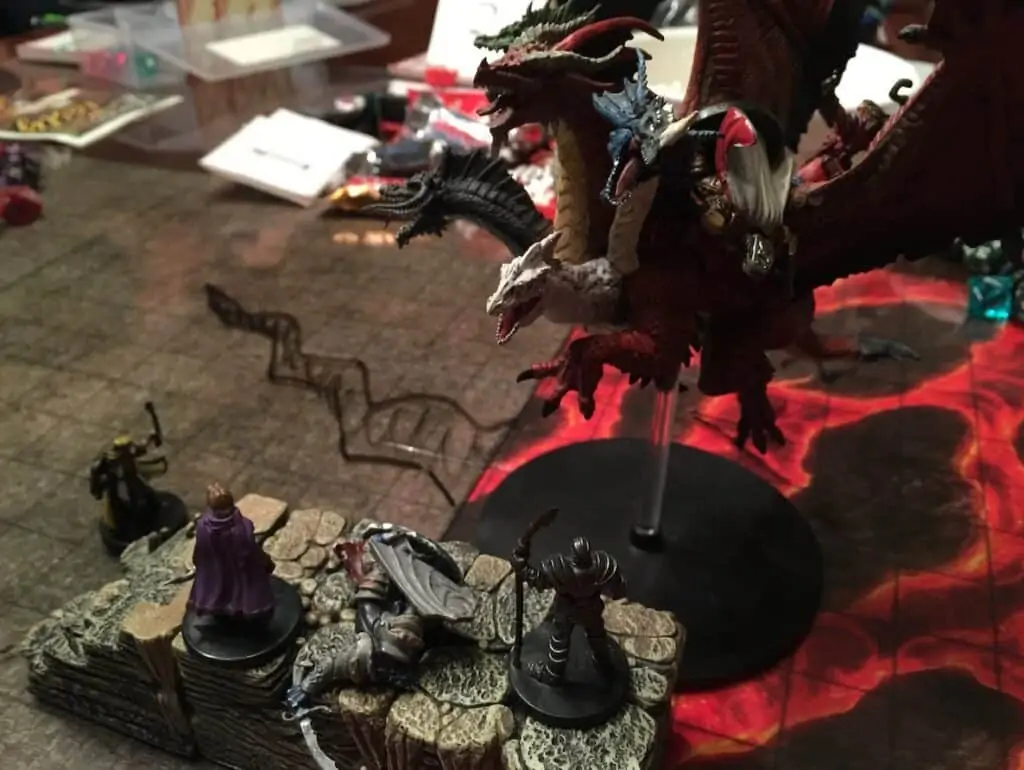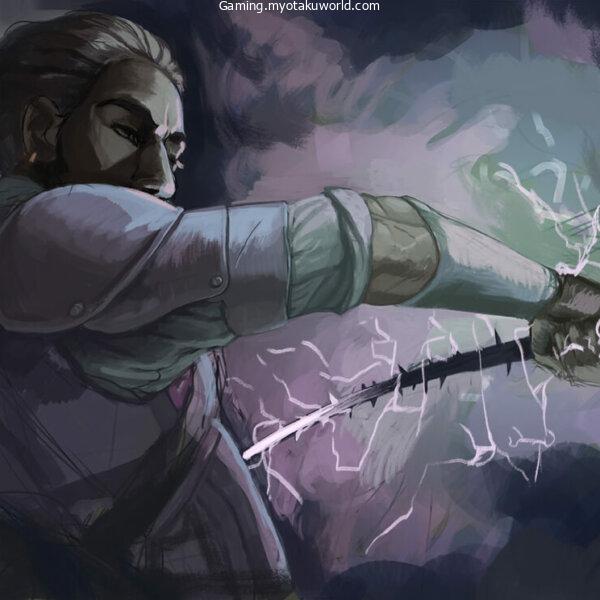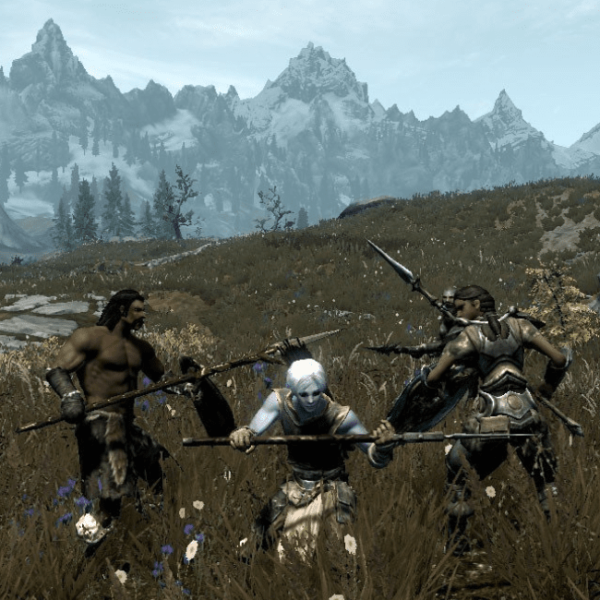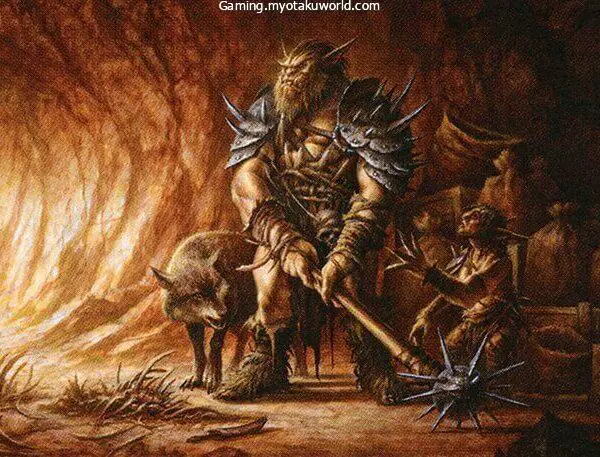Faerun has many battlefield control spells. You can choose to use the spell “Fireball”, which can do massive damage, but also change the view of the battle.
Thunderwave can be used to control the battlefield. It can not only do serious damage to your enemy but can knock them back, changing the course of the battle.
Thunderwave is an interesting spell that can cause great trouble for your enemies. But when can you use this spell? Who can use this spell?
What makes this spell so fascinating for those who can use it? This is our Thunderwave 5e guide to the spell.
What is Thunderwave?
These are the stats of the thunder wave spell as they appear in the player’s manual:
- 1 level evocation
- Casting time: 1 Action
- Range: Self (15-foot cube).
- Components: V S
- Duration: Instantaneous
- Classes: Bard, Druid, Sorcerer, Wizard
You are swept away by a powerful wave of force. Every creature within a 15-foot cube must make a Constitution saving throw.
A failure to save results in a creature taking 2d8 thunder damage. It is then pushed 10ft away from you. A successful save will result in the creature taking half the damage and being pushed back.
Unsecure objects within the affected area are automatically pushed 10ft away by the spell. The spell also emits a loud boom that can be heard up to 300ft.
Higher Levels: This spell increases the damage by 1d8 each time it is cast using a slot of 2nd or higher level.
It is a first-level spell, which requires only one action to cast. It is centered at the caster and expands in a cube measuring 15 feet.
This spell requires a verbal component as well as a somatic component. It can be cast by bards, sorcerers, druids, wizards, and druids.
Any creature within the 15-foot (3-square) cube must make a Constitution saving throw immediately after the spell has been cast. They take 2d8 thunder damage and they are pushed back 10 feet if they fail.
They make the save and the 2d8 thunder damage to the creatures is reduced by half. Any unsecured objects found within the 15-foot area are pushed 10ft away.
Finally, the spell’s usage emits a thunderous boom that is similar to thunder in the real world. The boom can be heard from 300 feet away.
If you increase the spell’s damage, the dice will multiply by 1d8 for each spell slot you use above the first.
The spell has a lot of details. First, the main draw is not the damage it does, but its effect.
Although 2d8 damage can be quite good and could kill an enemy, any enemy within 15ft of the caster must make a CON save. They will push 10 feet from you if they fail to make the save.
This spell is great if you are surrounded by druids, wizards, bards, or sorcerers and can’t defend yourself in close combat.
Sometimes, pushing enemies away by 10ft is enough to allow your character breathing space or to run whenever they need.
Is Thunderwave Good?
Overall, the score is blue. This means that thunderwave is a great spell, and you should give it serious thought for your character.
Overall Notes: This is a great, low-level way to push opponents back when you’re in a tight spot. The damage isn’t too bad, but it only works on CON saves.
What about the Sound it Makes?

Thunderwave doesn’t only involve thunder and pushing, it also produces a loud boom.
Thunderwave produces a loud boom that can be heard up to 300 feet away, which is a significant distance if the spell is being cast in open fields.
The sound is usually purely cosmetic. However, good DMs may make the spell sound more real if they wish.
Perhaps creatures sensitive to D&D sound are susceptible to thunder waves, which could lead to them becoming deafened.
According to the Player’s Handbook, a deafened creature cannot hear and will fail any ability test that requires hearing.
If your DM rules that any noise-sensitive monsters or characters become deaf after using the thunder wave spell they will not be affected if spells or commands require them to hear.
A thunderous boom, especially on a normal or cloudless day, can also cause trouble for other people.
People might be able to spot the problem if the spell is performed in the middle or center of a city. You can bet that the spell will be performed in the castle of a monster to show why it was done.
This spell is not recommended if you’re on a stealth mission or want to keep your party undecided. It’s going to be loud even without a DM homebrewing it.
Use the Push to your advantage
Most D&D games require you to fight in dungeons or open fields. However, you might be fighting on a ledge in some cases.
Thunderwave can be used in battles at great heights such as airship battles and battles on cliffsides. You can use this spell to move enemies 10 feet from a ledge. Then you can send them overboard.
It is not an easy trick, but it is possible. You will need to maneuver your foes around and make sure they lose their constitution saving throw.
This might not be an issue for smaller enemies. However, larger foes might require you to place a disadvantage on them or damage their ability score.
Do push knock enemies have a problem?
It does not knock enemies prone when they are pushed. This question is common. It merely pushes enemies away but leaves them standing.
The thunder waveless is like a wall of force that blasts enemies off the ground, but more like a gusting wind. Although you may not fall, you will step backward when you are hit by a strong gust of wind.
Another question is when your enemies are pushed into walls or other objects by the thunderwave spell.
You won’t do much damage to an enemy if you push them back 10 feet. The DM will decide what happens. Most DMs work with their players to find a solution.
A goblin striking a wooden wall will behave differently from a giant hitting a rock wall. However, if a pushed creature hits an object, the DM can determine what happens.
This ruling is also applicable if a loose, unsecured object files in the direction of a creature. Let’s take, for example, a goblin 5 feet from a bard who was hit by the Thunderwave spell and failed to save it. A pot right next to the goblin was also thrown backward.
In most cases, DMs will rule that no item collided with another. However, if a second Goblin is in the path to the pot and gets hit, that could be considered an improvised attack with improvised weapons damage.
It’s up to the DMs and players to decide how to play with it. Communication is key once a player has Thunderwave in his arsenal.
Thunderwave outside of combat?
Thunderwave is a cool spell that you can use in combat but doesn’t have much utility. It can be used to distract, cast the spell, and then move your party out of the area. You can then ambush monsters and other foes that hear the sound.
Thunderwave can be used to intimidate people. It causes a huge boom and sends objects flying. When you cast the spell, make sure that no one is within your 15-foot cube.
You can throw objects and make as much noise before your spell slots run out.
Can I Use Thunderwave Outside Of Combat?

Even though it isn’t very useful, Thunderwave can be a very cool spell to use outside of battle. You could use it as a distraction by casting the spell and then moving your group away from the area.
When monsters or other enemies come to check out the sound, you can set up a trap for them.
Thunderwave can also be fun to use to scare people, since making a huge boom and sending things flying is a great way to get your point across.
Just make sure that no one is in your 15-foot cube when you cast the spell. If you don’t have any spell slots, you can throw things around and make as much noise as you can before your spell slots run out.
FAQs
Does Thunderwave affect allies?
Because wizards, bards, and druids are usually at the back of the combat line in order of combat order, they may be next to their allies. If they are within the 15-foot area when Thunderwave is cast, then their allies must also make the constitution save and take the damage. If they fail to save, they will be pushed 10ft. This can seriously disrupt a battle plan.!
If you’re standing in front of your allies, you might not be able to cast the spell until they are clear. You won’t get too excited about the idea of propelling an ally ten feet further towards an enemy, even if it is.
How can I make casting Thunderwave fun for my kids?
Thunderwave is a powerful shockwave that you send toward your enemy. It includes pushing effects and a loud boom. It’s hard to look at this spell and not have fun. The spell requires both a verbal component and a somatic component. Your character must say or do something to cast the spell.
A bard might twang his lute and sing the word for thunder in his home language. An example of a Druid is to chant words of power or bang his staff on a floor. You might see the character make a lot of arm movements and mimic their opponents, or even unleash some lightning tendrils with thunder to zap enemies and force them backward.
Lastly, the ability is also available to some subclasses like the Eldritch Knight Fighter or the Tempest Cleric. You might find it interesting for your cleric to channel the power and fury of the storm into their spell, or for your fighter to bang on his shield to send back enemies with the shockwave. The way your characters cast magic depends on their backgrounds. However, if you are open to this possibility, it can make casting a cool spell even more enjoyable!
Is there any enemy that is able to move?
There are no enemies that are impervious to movement. However, some enemies may be more difficult to move because of their bulk. Thunderwave will be more difficult to use on a dragon than it would be on a kobold fighter if you try to use it. This is represented by the monster’s constitution score. It is usually higher for larger creatures.
The constitution is their resistance to being moved against the will of their will. As in real life, it is easier to move a toddler than a man 300 pounds heavier because of the drastic changes in strength and balance. Although no enemy is immune from movement, even the most powerful monsters can fail to pass a CON check. Before casting the spell, it is important to consider the size of the monster that you are moving.









